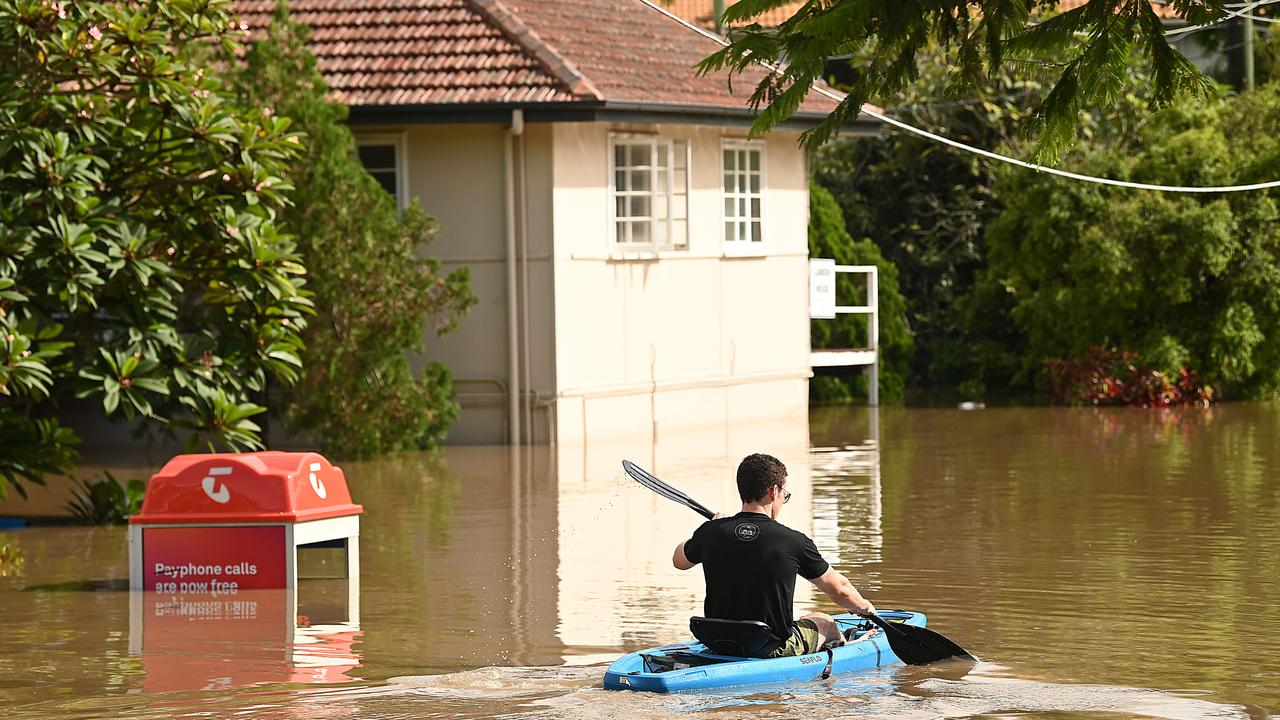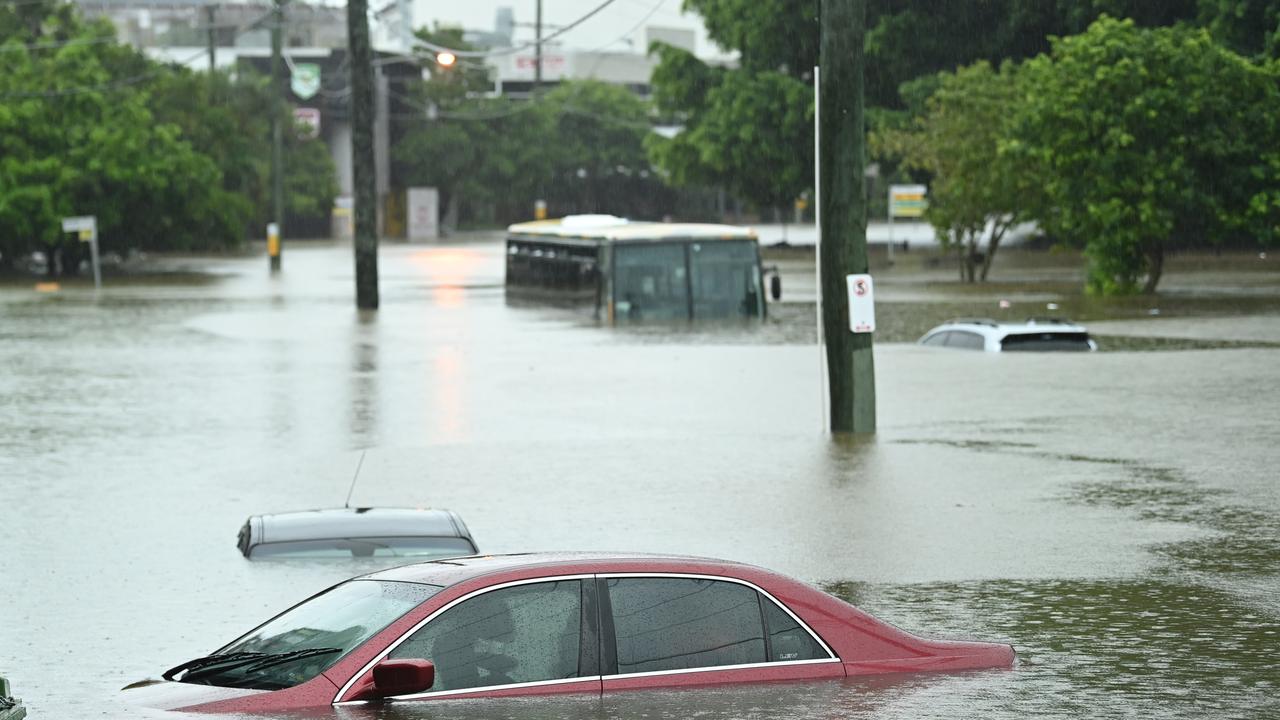Nature and climate change a destructive combination, says cartoonist Mark Knight
Mark Knight has captured the catastrophic force of the Queensland and NSW ‘rain bomb’ in his latest cartoon for Kids News

READING LEVEL: RED
Climate change is certainly making its presence felt here in Australia. It seems every summer there is a major catastrophic* weather event down under.
The weather “wheel of fortune” spins between bushfires, droughts, floods and cyclones. This summer it seems we’ve landed on floods, with southern Queensland and NSW the unfortunate recipients.
To give you an idea of the magnitude* of water dumped, Brisbane had three consecutive* days of rainfall above 200mm. That’s per day!
Huge areas that have never been flooded before have gone under. Countless homes, properties, businesses and infrastructure have been affected.
Insurers are saying the bill will be in the billions of dollars. And sadly there has been loss of life.
Such was the speed of the inundation*, the weather bureau was referring to it as a “rain bomb” dropped on an unsuspecting population.

I feel it is part of my role as an editorial cartoonist to capture these major events and try to illustrate what has just happened so we can try to understand it. These cartoons do not try to be funny, they are interpretative*.
When I heard the “rain bomb” term used, I thought it a very apt* way to describe the devastation it caused. It has been destruction on a massive scale, just like if an actual bomb had been dropped.
I wanted to try to illustrate in a cartoon what a “rain bomb” might actually look like?

When I was looking at pictures of atomic bombs* from the 1950s the idea came to me. I realised that one of the most powerful bombs created was the hydrogen bomb*, commonly referred to as the H Bomb.
My schoolboy chemistry suddenly kicked in and I recalled the formula for water was H2O. (Who says you never use anything you learn in school later in life!)
There was my “rain bomb”: the H2O bomb.
I wanted to illustrate what goes on inside an H2O rain bomb, so instead of uranium* and plutonium* and isotopes* of hydrogen* leading to an explosive fusion*, I would paint the equally powerful forces of nature such as a storm cell, thunderous black clouds and sheets of flooding rain. It is contained inside a regular bomb casing as it falls from the skies over a flooded landscape.
The cartoon seeks to illustrate that the forces of nature, combined with climate change, can be a powerful and humbling* destructive force when unleashed*.
GLOSSARY
- catastrophic: involving or causing sudden great damage or suffering
- magnitude: great size or extent
- consecutive: in a row, one after another
- inundation: flood
- interpretative: serving to try to explain or understand the meaning of something
- apt: appropriate, suitable in the circumstances
- atomic bombs: bombs that get their great destructive power from the sudden release of energy from the splitting of radioactive chemical elements like uranium and plutonium
- hydrogen bomb: the more advanced and powerful version of an atomic bomb
- uranium: a heavy metal that is radioactive and used to make nuclear energy and weapons
- plutonium: another radio active metal used to make nuclear energy and weapons
- isotopes: two or more types of atoms with the same number and position in the periodic table
- hydrogen: a colourless, odourless, tasteless gas
- fusion: the process or result of joining two or more things together to form a single thing
- humbling: cause someone to feel less important
- unleashed: the sudden release of something powerful that cannot be controlled
EXTRA READING
School’s out as Queensland floods cause havoc
Dealing with the world’s worries
QUICK QUIZ
- How many consecutive days did Brisbane receive more than 200mm of rain?
- What term did the weather bureau come up with to describe the rain event?
- Why did Mark Knight think this was an apt way to describe it?
- What word does Mark Knight use to describe the style of this cartoon?
- What is Mark trying to show about nature and climate change with this cartoon?
LISTEN TO THIS STORY
CLASSROOM ACTIVITIES
1. Add speech
Cartoonist Mark Knight has not used any speech in this cartoon, letting the imagery speak for itself.
Read Mark’s explanation of what the cartoon means again and write two, three or four short sentences, just to make sure you understand what the cartoon is saying.
Now come up with a character – a person or animal – that could be added to the cartoon. Write them down, along with a short explanation of what they are doing in the cartoon.
Next write a thought bubble or quote from that person or animal that will make the meaning of Mark’s cartoon clearer for children who haven’t been reading the news this week.
Time: allow at least 20 minutes to complete this activity
Curriculum links: English, Humanities, Visual Arts, Critical and Creative Thinking
2. Extension
Look through the most recent stories on Kids News and choose one to draw a cartoon about.
Use Mark’s three-step process to get started:
- What is my subject?
- What do I want to say about this issue?
- How do I say it? Do I use visual metaphors (an image that the viewer is meant to understand as a symbol for something else), multiple panels or symbolism (when one idea, feeling or emotion is represented by something else such as a picture, character, colour or object)?
Time: allow at least 40 minutes to complete this activity
Curriculum links: English, Humanities, Visual Arts, Critical and Creative Thinking
VCOP ACTIVITY
Wow word recycle
There are plenty of wow words (ambitious pieces of vocabulary) being used in the article. Some are in the glossary, but there might be extra ones from the article that you think are exceptional as well.
Identify all the words in the article that you think are not common words, and particularly good choices for the writer to have chosen.
Select three words you have highlighted to recycle into your own sentences.
If any of the words you identified are not in the glossary, write up your own glossary for them.

